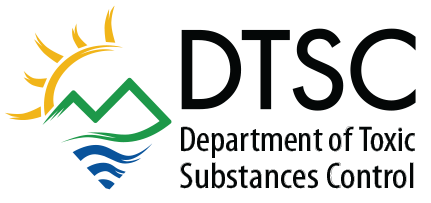Copy of – Who Needs a Hazardous Waste Facility Permit?
Any facility that stores, treats, or disposes of hazardous waste as described in the Hazardous Waste Control Laws (Health and Safety Code, Division 20, Chapter 6.5) must obtain a permit or a grant of authorization from the Department of Toxic Substances Control (DTSC).
For more information on identifying hazardous waste, please refer to our Defining Hazardous Waste webpage.
Note If you generate hazardous waste, then please refer to DTSC’s Generators of Hazardous Waste webpage for more information.
What is Hazardous Waste?
Hazardous waste in California includes:
Wastes identified and defined in the Resource Conservation and Recovery Act (RCRA), the federal statue regulating facilities that treat, store, or dispose of hazardous waste
Additional wastes that California has determined to be hazardous (i.e., non-RCRA hazardous waste)
For more information on identifying hazardous waste, please refer to our Defining Hazardous Waste webpage.
Tiered Permitting
California has a five-tiered permitting program with each tier matching the degree of risk posed by the hazardous waste facility. The five permitting tiers are:

The Full Permit Tier
This tier includes all facilities requiring a RCRA permit in addition to facilities performing selected non-RCRA activities pursuant to Title 22 of the California Code of Regulations.
Refer to DTSC’s Permit Process Flowchart to learn more about the permit process and what occurs at each step.
Full Permit Applicant Documentation and Guidance
- RCRA Permit Instructions (Coming Soon)
- Permit Applicant Handbook
- Disclosure Statement Instructions and Forms
- Tank Assessment Report Guidance
- Tank Assessment Report Frequently Asked Questions
- Permit Applicants’ Guidance Manual for the General Facility Standards of 40 CFR 264
- Exemptions and Exclusions
The Standardized Permit Tier
This tier includes some facilities that manage waste not regulated under RCRA, but are regulated as a hazardous waste in California (i.e., non-RCRA hazardous waste). Examples of facilities that may be eligible for authorization under a standardized permit include, but are not limited to:
- used oil transfer/storage facility
- precious metal recyclers
Refer to DTSC’s Permit Process Flowchart to learn more about the permit process and what occurs at each step.
Standardized Permit Applicant Documentation and Guidance

Interested in a Full or Standardized Permit?
Contact DTSC at newpermits@dtsc.ca.gov or use the button below.
The Permit by Rule (PBR) Tier
This tier is a non-RCRA onsite treatment permit for specific waste streams and treatment processes. Example waste streams and treatment processes that may fall under the PBR tier include, but are not limited to:
- concentrated metal-bearing wastes
- concentrated acids or alkalis
- wastes posing multiple hazards
- silver recovery
The Conditional Authorization (CA) Tier
This tier is a non-RCRA hazardous waste onsite treatment authorization for specific waste streams. Example waste streams that may fall under the CA tier include, but are not limited to:
- metal-bearing waters
- mostly single-hazardous wastes
- some neutralization
- oil/water separation
The Conditional Exemption (CE) Tier
This tier is a non-RCRA hazardous waste onsite treatment authorization for small-quantity treatment and other low-risk treatment. Example treatment processes that may fall under the CE tier include, but are not limited to:
- oil-water separation
- container rinsing or destruction
- gravity settling
- some neutralization
Interim status statutes and regulations are found in Health and Safety Code Section 25200.5
Interim Status Applicant Documentation and Guidance
- RCRA Hazardous Waste Part A Permit Application
- Interim Status Standards for Owners and Operators of Hazardous Waste Transfer, Treatment, Storage, and Disposal Facilities—California Code of Regulations, Chapter 15
Emergency Permits
An emergency permit is a temporary authorization from DTSC for the management of hazardous waste, posing an imminent and substantial endangerment to human health or the environment.
Emergency permits may be issued to:
For more information on Emergency Permits, refer to DTSC’s Emergency Permits webpage.
a facility that does not have a hazardous waste facility permit or
a permitted facility for activities not otherwise authorized.
Note The determination of whether or not an emergency permit should be issued is made on a case-by-case basis, and includes ongoing assessment throughout the resolution of the situation.
Department of Toxic Substances Control’s Permit Renewal Process

Note New facilities, or facilities with substantial changes, may need an EPA ID number, conditional use permit, or environmental impact report (EIR).
Pre-Application Phase
- DTSC mails out Reminder Letter and Draft Cost Reimbursement Agreement with initial cost reimbursement estimate to applicant
- DTSC holds Pre-Application Meeting and visits applicant’s hazardous waste facility
- DTSC completes Initial Compliance History Review
Administrative Review Phase
- Applicant signs and sends Cost Reimbursement Agreement with the 25% Advance Payment
- DTSC notifies the Public and Other Agencies on receipt of Hazardous Waste Facility Application (Application)
- DTSC receives Application and performs Administrative Completeness Review
Technical Review Phase
California Environmental Quality Act (CEQA) Review
- DTSC determines CEQA Document
- DTSC prepares CEQA Document
Technical Review
- DTSC reviews Application for technical completeness
- DTSC issues Notice of Deficiency document
- Applicant sends revised Application that addresses the Notice of Deficiency items
- DTSC conducts community survey and completes Community Profile
Draft Permit Phase
- DTSC prepares and issues Draft Permit or Notice of Intent to Deny and Statement of Basis
- DTSC notifies public of permit decision and CEQA Document through newspaper notice, radio ad, and community update
- DTSC holds 45-day public comment period for the permit decision
- DTSC conducts public meeting/hearing
Final Permit Phase
- DTSC prepares and issues Response to Comments document
- DTSC finalizes permit decision and files CEQA Notice of Determination
Additional Permit Information
Tiered Permitting Phase I Environmental Assessment:
Transportable Treatment Units – Fact Sheets
Cost Reimbursement Policy
- Statement of Cost Recovery Policies and Billing Procedures to Implement the Hazardous Substance Account Act (Health and Safety Code sections 25206.1-25206.4)
Question?
Email DTSC’s Permitting Division at newpermits@dtsc.ca.gov or by using the button below.
Last updated: March 20, 2024
Permitting Links
- Permitting Home
- Community Information
- Commonly Referenced Regulations
- Community Protection (SB 673)
- Contact Info
- Managing Hazardous Waste
- Who Needs a Hazardous Waste Facility Permit?
- Permit Appeals
- List of Permitted Hazardous Waste Facilities in California
- The Permitting Process & Climate Change
- Additional Permitting Information and Resources
Hazardous Waste Links
- Hazardous Waste Home
- Certified Appliance Recycler (CAR) Program
- CUPAs
- Defining Hazardous Waste
- Electronic Waste (E-Waste)
- Enforcement and Emergency Response Division
- Facilities (TSDFs)
- Generator Improvements Rule
- Generators
- Hazardous Waste ID Numbers
- Hazardous Waste Management Plan
- Hazardous Waste Manifests
- Hazardous Waste Tracking System
- Household Hazardous Waste
- Metal Recycling
- Metal Shredding Facilities and Wastes
- Permitting
- Toxics in Products
- Transporters
- Universal Waste
- Form 1358
- California Hazardous Waste Codes
Hazardous Waste Related Links
- Annual/Biennial Reports
- Annual Fee Summary
- Customer Billing Portal (Cost Recovery)
- DTSC Advisory on the Management of Spent Fuels
- EnviroStor
- Hazardous Waste Publications
- Find a Registered Hazardous Waste Transporter
- Hazardous Waste Policies & Procedures
- Hazardous Waste Project Documents
- Imports and Exports of Hazardous Waste
- Kettleman Hills Facility
- Land Use Restriction Sites
- Office of Criminal Investigations
- PV Modules (Solar Panels)
- Regulatory Assistance Office
- Report an Environmental Concern
- Retail Waste
